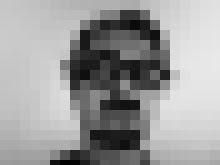
Sorry in Dutch.
Voor de Open Mind editie maart 2010 worden professor Henk Broer, choreograaf Guy Weizman en mediakunstenaar Adri Schokker samengebracht in een kort intensief werkproces. Op vrijdag 19 maart zullen ze een korte presentatie geven van hun denkproces en verkenningen in een winkelruimte in de Nieuwe Ebbingestraat.
Henk Broer is deskundige op het gebied van niet-lineaire dynamische systemen, in het dagelijkse taalgebruik bekend onder de term ‘chaostheorie’ . Kort gezegd komt de chaostheorie er op neer dat een klein verschil in een bepaalde beginwaarde een enorm effect kan hebben op de uitkomst.
Guy Weizman is een choreograaf die de uiterste grens van de dans opzoekt. Eerder deed hij intensief onderzoek naar de ‘chaostheorie’ en maakte enkele voorstellingen die hierop waren gebaseerd.
Adri Schokker is een mediakunstenaar die zich manifesteert via interactieve installaties, videofilms, performances en theatrale vormgeving. Hij voedt zich met een breed scala aan onderwerpen maar gaat daarbij ook nog eens de diepte in. Toen hij bij Open Mind 2009 met Professor John Videler samenwerkte aan het “How do Birds Fly” thema, doorzocht hij dagen-en nachtenlang de vakliteratuur naar de mogelijkheden om daadwerkelijk met zijn eigen lichaam te kunnen vliegen.
Bij de eerste bijeenkomst werd op verzoek van Guy besloten het onderzoek te focussen op akoestische levitatie. Een gebied waar nog weinig mee gedaan is. Er is daarna voor een bredere insteek gekozen: we gaan onderzoeken hoe geluid invloed kan hebben op materie. We beginnen bij de eenvoudige vragen; Wat is geluid, hoe reist het en welke invloed kunnen verschillende geluidsfrequenties op elkaar hebben? Hoe ziet een choreografie eruit die bestaat uit verschillende geluidsresonanties die op elkaar inwerken?
Resonantie: als in een systeem twee of meer oscillerende (zeg trillende of slingerende -- dansende) bewegingen samenwerken.
see / hear / fly
Na twee korte weken samen, geeft het Open Mind Resonance Choreographies team een korte presentatie van de wilde en ongepolijste ideeën die bij het onderzoek boven zijn gekomen.
Kom langs en leer in 20 minuten hoe geluid een chaotisch systeem kan veroorzaken en hoor waarom Mercurius waarschijnlijk op termijn uit zijn baan met de zon zal gaan....
Meer info
Pavlov E-Lab























